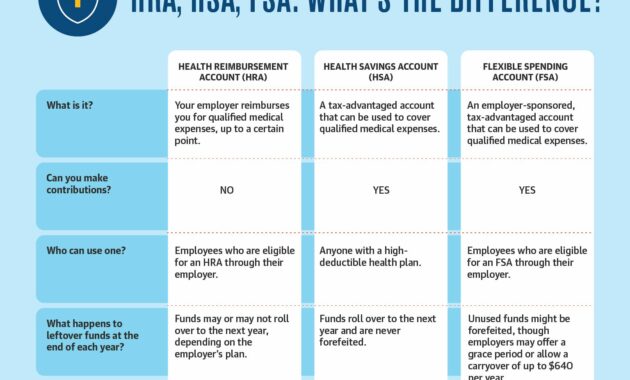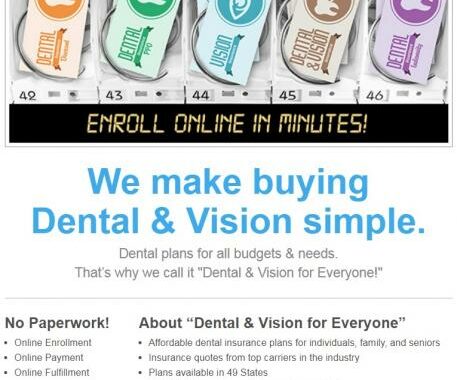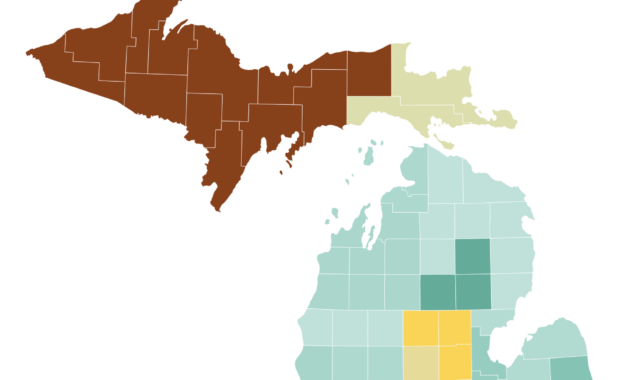Introduction
In this era of spiraling healthcare costs, affordable health insurance plans emerge as an indispensable lifeline for individuals seeking to safeguard their well-being and financial security. With healthcare expenses relentlessly escalating, the burden of medical bills threatens to cripple the financial stability of countless individuals. Navigating the complexities of the healthcare system without comprehensive coverage can lead to catastrophic consequences, leaving individuals vulnerable to debt, bankruptcy, and even homelessness. Affordable health insurance plans serve as a vital safety net, providing peace of mind and ensuring access to necessary medical care without breaking the bank.
The Affordable Care Act (ACA), also known as Obamacare, revolutionized the health insurance landscape in the United States. Prior to its implementation, millions of Americans lacked access to affordable health insurance, leaving them exposed to financial ruin in the event of unforeseen medical emergencies. The ACA introduced a number of provisions aimed at making health insurance more accessible and affordable, including subsidies for low- and middle-income earners, an expansion of Medicaid eligibility, and the creation of health insurance marketplaces where individuals can compare plans and purchase coverage. These measures have been instrumental in reducing the number of uninsured Americans and providing a lifeline to those who were previously struggling to afford health insurance.
Despite the progress made under the ACA, many individuals still face challenges in finding affordable health insurance plans that meet their needs and budget. The cost of health insurance varies widely depending on factors such as age, location, income, and health status. For those with pre-existing conditions, securing affordable coverage can be particularly difficult. However, there are a number of resources available to help individuals find affordable health insurance plans, including government subsidies, non-profit organizations, and insurance brokers. By exploring all available options, individuals can find affordable health insurance plans that provide the coverage they need without sacrificing their financial well-being.
Affordable Health Insurance Plans for Individuals: A Comprehensive Guide
Navigating the healthcare landscape can be daunting, especially when it comes to finding affordable health insurance. Individuals face a myriad of choices, each with its unique benefits and drawbacks. This article aims to demystify the world of health insurance by providing a comprehensive guide to affordable plans available to individuals.
Types of Affordable Health Insurance Plans
The complexities of health insurance plans can often leave individuals feeling overwhelmed. Understanding the different types of plans is crucial in making an informed decision. Let’s delve into the various options available:
High-Deductible Health Plans (HDHPs)
HDHPs are a popular choice for those seeking a more cost-effective option. These plans typically come with lower monthly premiums compared to other types of plans. However, they also have higher deductibles, which represent the amount the individual must pay for covered medical expenses before the insurance kicks in. HDHPs often allow individuals to set aside pre-tax dollars in a health savings account (HSA) to cover eligible medical expenses. The funds in an HSA can be used to pay for deductibles, co-pays, and other healthcare costs. By combining an HDHP with an HSA, individuals can enjoy tax savings and more control over their healthcare expenses.
Health Maintenance Organizations (HMOs)
HMOs offer a network of healthcare providers, including doctors, hospitals, and specialists. Individuals enrolled in an HMO plan typically have lower monthly premiums and out-of-pocket costs compared to other plans. However, HMOs also restrict individuals to receiving care from within their network of providers. If an individual seeks care outside the network, they may face higher costs or limited coverage. HMOs often provide additional benefits such as preventive care and wellness programs.
Preferred Provider Organizations (PPOs)
PPOs offer a wider network of healthcare providers compared to HMOs. Individuals enrolled in a PPO plan have the flexibility to choose doctors and hospitals both within and outside the network. PPOs typically have higher monthly premiums than HMOs but lower out-of-pocket costs than HDHPs. Individuals may face higher costs if they choose to receive care from out-of-network providers. PPOs offer a balance between cost and flexibility, making them a popular choice for many individuals.
Other Affordable Plan Options
In addition to HDHPs, HMOs, and PPOs, there are other affordable health insurance plans available. These include:
- Catastrophic health insurance plans are designed for individuals under 30 or those who qualify for hardship exemptions. These plans have very low monthly premiums but high deductibles. They only cover essential health benefits and may not be suitable for individuals with ongoing healthcare needs.
- Short-term health insurance plans are temporary plans that can provide coverage for a specific period, such as during a job transition or between major health insurance plans. These plans typically have lower monthly premiums but may not cover all essential health benefits.
- Medicaid is a government health insurance program for low-income individuals and families. Eligibility for Medicaid varies by state, but it can provide comprehensive coverage at little or no cost.
Choosing the right affordable health insurance plan depends on individual circumstances, health needs, and budget. It’s advisable to compare different plans and consult with an insurance agent or broker to find the best option that meets specific requirements.
Affordable Health Insurance Plans for Individuals
Finding affordable health insurance plans for individuals can be an overwhelming task, but it’s crucial to protect your health and financial well-being. Whether you’re navigating the complexities of the Affordable Care Act or exploring private options, understanding your coverage choices is essential. This comprehensive guide will empower you with the knowledge to make informed decisions and secure the best health insurance plan that meets your individual needs.
Understanding Your Coverage Options
The first step in finding affordable health insurance plans for individuals is understanding the different types of coverage available. There are two main categories: government-sponsored programs and private insurance plans.
Government-sponsored programs, such as Medicaid and the Affordable Care Act (ACA), provide financial assistance to low-income individuals and families. These programs offer a range of health insurance plans with varying levels of coverage and costs.
Private insurance plans are offered by commercial insurance companies and provide a wider range of options. Premiums and coverage vary depending on the insurer and the plan you choose.
Comparing Plans and Costs
Once you understand your coverage options, it’s time to compare plans and costs. Consider your budget, health needs, and lifestyle when making a decision.
Premiums are the monthly payments you make for your insurance plan. It’s essential to choose a plan with a premium you can afford. Co-pays and deductibles are other important factors to consider. Co-pays are fixed amounts you pay for specific services, while deductibles are the amount you pay out-of-pocket before your insurance coverage kicks in.
Leveraging Government Assistance
Government programs like Medicaid and the Affordable Care Act (ACA) can provide financial assistance to low-income individuals and families for health insurance coverage. Medicaid is a joint federal and state program that provides health insurance to low-income individuals, families, and people with disabilities. The ACA, also known as Obamacare, provides tax credits and subsidies to help people purchase health insurance through the Health Insurance Marketplace.
Exploring Private Insurance Options
If you don’t qualify for government assistance, you can explore private insurance options. Private insurance plans are offered by commercial insurance companies and provide a wider range of coverage options. Premiums and coverage vary depending on the insurer and the plan you choose.
When comparing private insurance plans, consider the following factors: premiums, deductibles, co-pays, out-of-pocket maximums, and network of providers. Choose a plan that meets your budget and health needs.
Tips for Finding Affordable Health Insurance Plans for Individuals
Here are some additional tips for finding affordable health insurance plans for individuals:
- Shop around and compare plans from multiple insurers.
- Consider a high-deductible plan with a lower premium.
- Look for plans that offer discounts for healthy habits.
- Take advantage of government assistance programs if you qualify.
- Consider joining a health insurance co-op.
Conclusion
Finding affordable health insurance plans for individuals requires careful research and consideration. By understanding your coverage options, comparing plans and costs, and exploring government assistance programs, you can secure a plan that meets your budget and health needs. Remember to shop around, ask questions, and don’t be afraid to negotiate with insurance companies to get the best deal possible.
Affordable Health Insurance Plans for Individuals
Navigating the healthcare landscape can be like trying to decipher a cryptic puzzle, especially when it comes to finding affordable health insurance as an individual. The good news is that there are options at your disposal, designed to provide peace of mind without breaking the bank. From employer-sponsored plans to government-subsidized programs, let’s delve into the world of affordable health insurance, empowering you to make informed decisions about your well-being.
Employer-Sponsored Plans
For many individuals, employer-sponsored health insurance plans offer a safety net, providing access to comprehensive coverage at a reduced cost. These plans are often a part of a benefits package, subsidized by employers as a way to attract and retain valuable employees. If you’re fortunate enough to have access to such a plan, don’t hesitate to take advantage of it. Not only can it save you money, but it also offers the convenience of having your coverage seamlessly integrated with your paycheck.
Government-Subsidized Programs
Government-subsidized programs, such as Medicaid and Medicare, are lifelines for individuals who may not have access to affordable health insurance through their employers. Medicaid is a joint federal and state program that provides health coverage to low-income individuals, families, and children. Medicare, on the other hand, is a federal program that provides health insurance to individuals over the age of 65, as well as younger individuals with certain disabilities.
Health Insurance Marketplace
For those who don’t have access to employer-sponsored or government-subsidized health insurance, the Health Insurance Marketplace, also known as the Exchange, provides a platform to compare and purchase health insurance plans from private insurers. The Marketplace offers a range of plans, from basic to comprehensive, and provides financial assistance to individuals and families who qualify. By visiting your state’s Marketplace website, you can compare plans and premiums, and find a policy that meets your needs and budget.
Private Health Insurance Plans
If you don’t qualify for government-subsidized programs or don’t have access to employer-sponsored health insurance, private health insurance plans are an option worth considering. These plans are offered by private insurance companies and can vary widely in terms of coverage, premiums, and deductibles. It’s important to carefully compare different plans and choose one that meets your individual needs and financial situation. Be sure to consider factors such as the monthly premium, deductible, co-pays, and out-of-pocket maximums.
Short-Term Health Insurance Plans
For those who need temporary health coverage, such as between jobs or while waiting for government-subsidized benefits to kick in, short-term health insurance plans can provide a safety net. These plans are typically less comprehensive than traditional health insurance plans, but they can offer basic coverage for a limited period of time. It’s important to note that short-term health insurance plans may not cover pre-existing conditions, so be sure to carefully review the terms and conditions before signing up.
Affordable Health Insurance Plans for Individuals
Navigating the world of health insurance can be a daunting task, but it doesn’t have to be. If you’re an individual seeking affordable health coverage, you’re in luck. Let’s dive into the realm of individual health insurance plans, exploring the options available and guiding you toward the right choice for your needs.
What is an Individual Health Insurance Plan?
An individual health insurance plan, unlike employer-sponsored insurance, is a contract between an individual and an insurance company. It provides coverage for medical expenses, including doctor visits, hospital stays, and prescription drugs. These plans are tailored to your specific needs and budget, offering flexibility and control over your healthcare expenses.
Types of Individual Health Insurance Plans
There are two main types of individual health insurance plans:
- Health Maintenance Organizations (HMOs): HMOs offer a network of healthcare providers to choose from. You’ll have a primary care physician who coordinates your care and refers you to specialists within the network.
- Preferred Provider Organizations (PPOs): PPOs provide more flexibility by allowing you to see any healthcare provider, both within and outside the network. However, services received outside the network may come with higher costs.
Choosing the Right Plan
Selecting the right individual health insurance plan requires careful consideration of several factors:
- Coverage: Determine what medical services and expenses the plan covers, including deductibles, copayments, and coinsurance.
- Premiums: Factor in the monthly or annual cost of the plan and whether it fits your budget.
- Network: Consider the network of healthcare providers available under the plan and whether it meets your needs.
- Customer service: Look for an insurance company with a reputation for providing excellent customer support.
Individual Health Insurance Marketplace
The Health Insurance Marketplace, also known as the Affordable Care Act, is a government-run exchange where individuals can compare and purchase affordable health insurance plans from different insurers. This marketplace provides subsidies and tax credits to qualified individuals, making health insurance even more accessible.
Shopping for Individual Health Insurance
To shop for an individual health insurance plan, you can:
- Contact insurance companies directly: Reach out to multiple insurance carriers to get quotes and compare plans.
- Use an insurance broker: Insurance brokers can help you navigate the market and find the best plan for your needs.
- Visit the Health Insurance Marketplace: The Health Insurance Marketplace allows you to compare plans, receive subsidies, and enroll in coverage.
Conclusion
Finding an affordable health insurance plan for individuals can empower you to take control of your healthcare expenses. By understanding the different types of plans, evaluating your needs, and exploring the available options, you can make an informed decision that protects your health and well-being. Remember, having health insurance is not just a financial matter; it’s an investment in your future.
Affordable Health Insurance Plans for Individuals: A Comprehensive Guide
Navigating the complexities of health insurance can be daunting, especially with rising healthcare costs and a maze of plans to choose from. But finding affordable health insurance for individuals doesn’t have to be an insurmountable task. Here’s a comprehensive guide to help you navigate the landscape and secure the coverage you need without breaking the bank.
Understanding Health Insurance Basics
Before you start shopping for health insurance, it’s crucial to understand the basics of how it works. Health insurance is a contract between you and an insurance company. You pay premiums each month, and in return, the insurer agrees to cover part or all of your healthcare expenses if you get sick or injured.
Types of Health Insurance Plans
There are several types of health insurance plans available, each with its advantages and disadvantages. The most common types include:
- Health Maintenance Organizations (HMOs): HMOs offer a network of contracted providers, and you must use those providers to receive coverage. HMOs often have lower premiums than other plans, but your choice of doctors and hospitals may be limited.
- Preferred Provider Organizations (PPOs): PPOs also have a network of providers, but you can choose to go out-of-network if you’re willing to pay a higher cost. PPOs typically have higher premiums than HMOs, but offer more flexibility.
- Exclusive Provider Organizations (EPOs): EPOs are similar to HMOs, but they have a narrower network of providers. EPOs generally have lower premiums than PPOs but less flexibility.
- Point-of-Service (POS) Plans: POS plans offer a blend of HMO and PPO features. You can choose to stay in-network for lower costs or go out-of-network for more flexibility. POS plans typically have premiums that fall between HMOs and PPOs.
Choosing the Right Plan for You
When selecting a health insurance plan, consider your health needs, budget, and lifestyle. If you’re healthy and don’t anticipate needing extensive medical care, a higher-deductible plan with lower premiums might be a good option. If you have chronic health conditions or expect to need regular medical services, a lower-deductible plan with higher premiums may be more suitable.
Tips for Saving Money
Lowering your health insurance costs can be achieved through several strategies. Consider:
1. Choosing a Plan with a High Deductible: Plans with higher deductibles typically have lower premiums. A deductible is the amount you must pay out-of-pocket before your insurance coverage kicks in.
2. Increasing Your Deductible: If you’re healthy and don’t anticipate needing significant medical care, you can increase your deductible to lower your premiums. However, be mindful of your financial situation and ability to cover the higher deductible in case of a medical emergency.
3. Using Preventive Care Services: Preventive care services, such as regular check-ups and screenings, can help prevent or catch illnesses early on, potentially saving you money in the long run on more expensive treatments.
4. Negotiating with Your Employer: If you get health insurance through your employer, consider negotiating a lower rate or premium contribution. Some employers offer flexible spending accounts or health savings accounts that can help you save money on your health expenses.
5. Getting a Health Discount: Joining a professional organization or health club can often qualify you for discounts on health insurance premiums.
6. Comparing Plans Before You Buy: Don’t settle for the first plan you see. Take the time to compare multiple plans from different insurance companies to find the best option for your needs and budget.
Conclusion
Finding affordable health insurance for individuals can be challenging, but it’s not impossible. By understanding the basics, considering your options, and implementing cost-saving strategies, you can secure the coverage you need to protect your health and financial well-being. Remember, health insurance is an investment in your future, so make informed decisions and prioritize your health.












